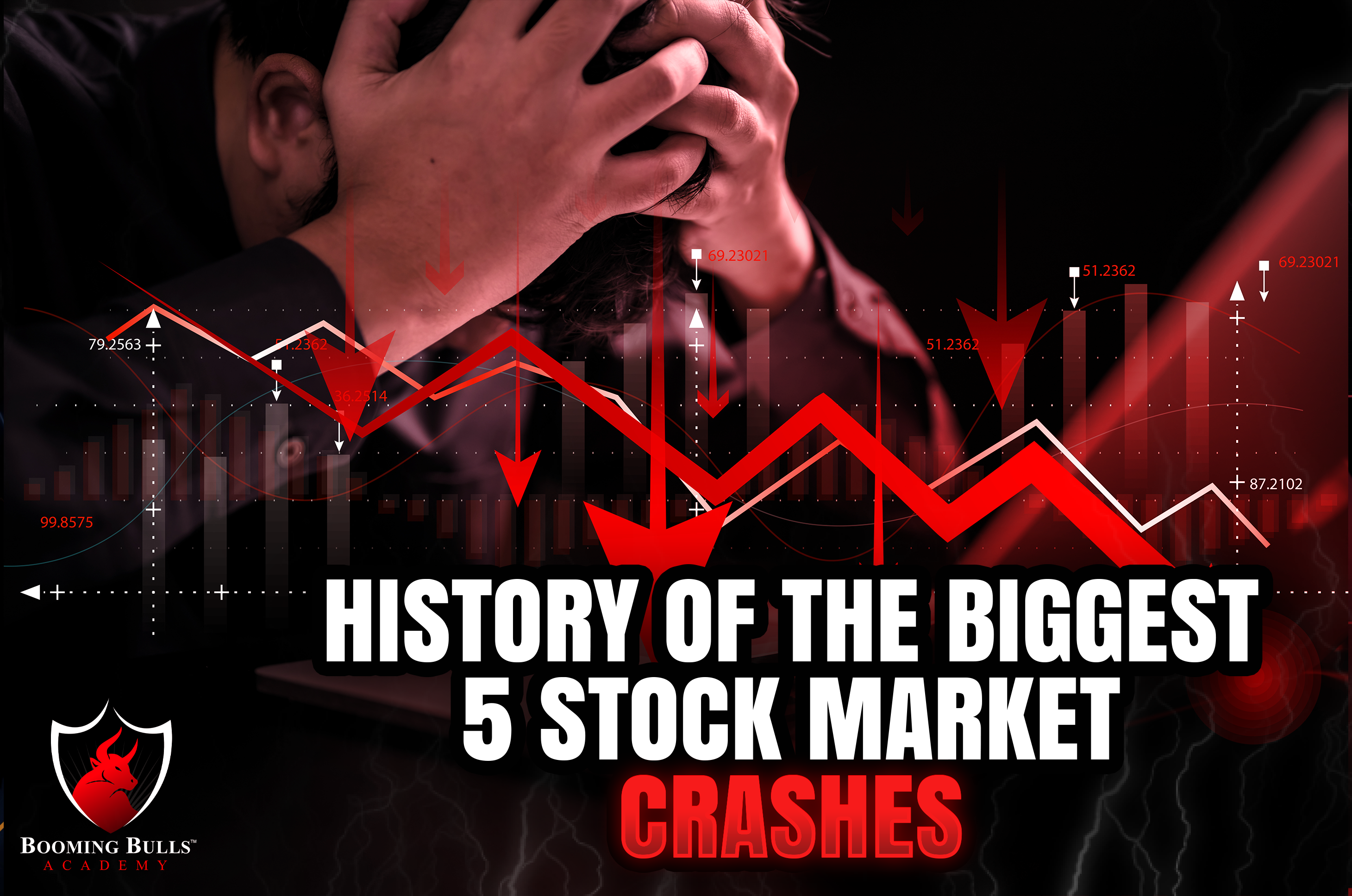

The annals of financial history are speckled with tales of euphoria and despair, epitomized by the dramatic rise and fall of stock market bubbles. These events, marked by a rapid escalation in asset prices followed by a devastating stock market crash, serve as cautionary tales for investors. This article delves into the history of the biggest 5 stock market crashes, unraveling the circumstances that led to these financial upheavals and the lessons learned in their wake.
Often cited as the first recorded speculative bubble, the Tulip Mania swept through the Dutch Republic in the early 17th century. Prices of tulip bulbs soared to extraordinary levels, with single bulbs trading for the price of a luxurious house. The bubble burst in 1637, leading to a severe stock market crash that left many investors in financial ruin. This event highlighted the dangers of speculative excess and the psychological dynamics of market bubbles.
The South Sea Company, granted a monopoly to trade in Spain’s South American colonies, became the center of wild financial speculation in Britain. Shares soared based on unrealistic expectations of future trade profits, only to collapse as it became clear that the anticipated wealth would not materialize. The resulting stock market crash not only decimated fortunes but also led to a crisis of confidence in the British financial system, prompting the government to intervene and stabilize the situation.
Marking the beginning of the Great Depression, the Wall Street Crash of 1929 is perhaps the most infamous stock market crash in history. After a decade of economic prosperity and speculative investment in the stock market, the bubble burst in October 1929, wiping out billions of dollars in wealth. This crash underscored the need for regulatory oversight to prevent excessive speculation and protect investors from systemic risks.
The late 1990s saw the rapid rise of internet-based companies, fueled by the advent of the World Wide Web and investor enthusiasm for digital technologies. Valuations of dot-com companies reached astronomical levels, often without the revenues to justify such figures. When the bubble burst in 2000, it led to a significant stock market crash, erasing trillions in market value. The dot-com crash served as a harsh lesson on the importance of fundamental analysis and the risks of speculative investment in emerging technologies.
Triggered by the collapse of the housing bubble in the United States, the financial crisis of 2008 led to a global stock market crash. The crisis was exacerbated by high-risk mortgage loans, excessive leverage, and complex financial products that many investors did not fully understand. The aftermath saw the collapse of major financial institutions, government bailouts, and a deep global recession. This crisis highlighted the interconnectedness of global financial markets and the need for stronger financial regulations and risk management practices.
Each stock market crash, unique in its causes and consequences, offers valuable lessons for investors and policymakers. The importance of due diligence, the dangers of speculation, and the need for robust financial regulations are recurring themes. These historical events emphasize the necessity of a disciplined investment approach, focusing on long-term value rather than short-term gains.
Furthermore, the resilience of financial markets in the aftermath of these crashes offers a silver lining. Markets have the capacity to recover and provide opportunities for growth, underscoring the importance of patience and a well-considered investment strategy.
The history of the top 5 stock market crashes serves as a powerful reminder of the cyclical nature of financial markets. By studying these events, investors can gain insights into the dynamics of market bubbles and the importance of maintaining a level-headed approach to investing. While the timing and triggers of the next stock market crash remain uncertain, the lessons learned from past bubbles can help investors navigate future market upheavals with greater wisdom and caution.
If you wish to learn more about the stock market, Intraday trading strategies, risk management, etc., in greater detail, you will find the relevant articles on the Booming Bulls Academy blog.
Open a Demat Account using our link to get support from us – https://bit.ly/3gyhIWN and send your ID to [email protected]
Happy learning!
